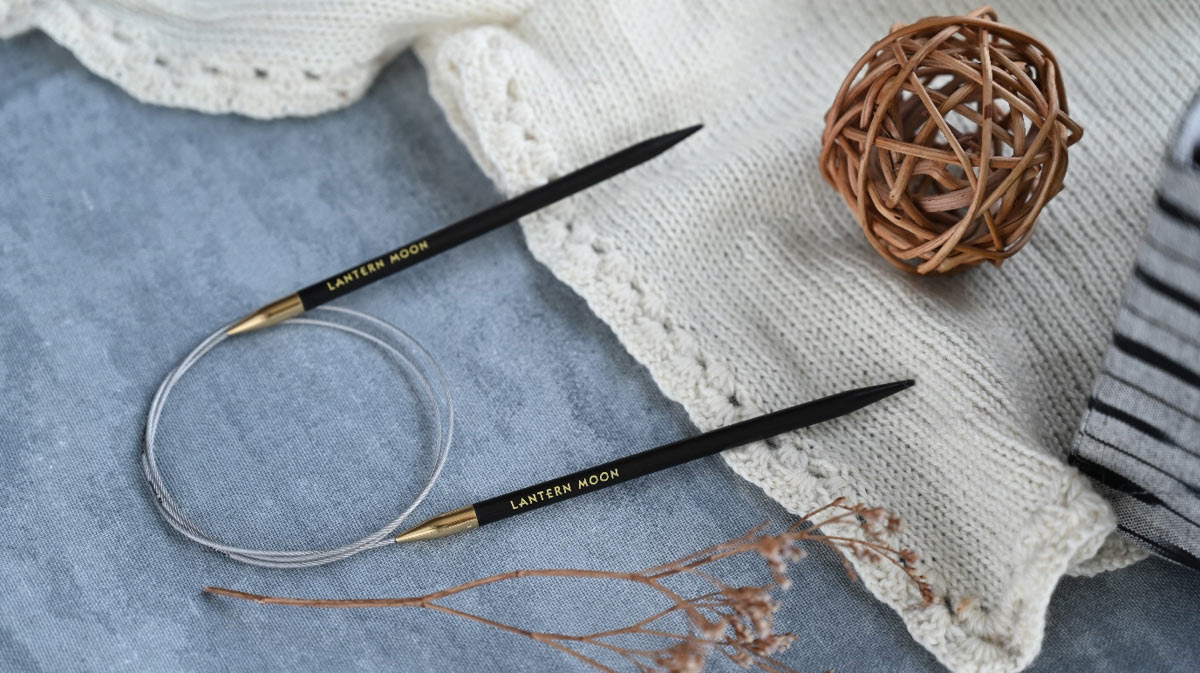
K2tog is a basic knitting decrease that you will come across for many projects. Knitting decreases are techniques that shape a project and make aesthetic lace patterns and exciting textures. In our previous blog, we discussed knitting decreases. In this blog, we’ll explore the technique of knitting two together (k2tog) in detail. A common decrease technique, knit-two-together works with any of your regular knitting needles. You can find the stitch technique in knitting patterns, such as socks, hats, and garments. It’s one of the easiest decreases to work, producing a neat right-leaning stitch. Even with some practice, it is easy for beginners to work without any trouble. So, let’s get started with exploring the k2tog technique.
Gather your favorite knitting needles and yarn. Also, make sure to have stitch markers, finishing needles, a pair of scissors, and other essential knitting accessories. If you are working on a pattern, continue following the instructions until you get to k2tog. If you think of practicing the stitch technique before starting a project, make a gauge swatch first.
Understanding K2Tog
K2tog basically means knitting two stitches together. This method decreases the stitch count from the previous row or round, giving a tapered shape, generally for socks, the tops of hats, and beanies. Decreasing the stitch count with k2tog is common in lace patterns to recreate holes for an aesthetic design.
K2tog is a right-leaning decrease often used on the left side of projects. It looks like it’s slanting toward the center of the work. In a pattern with a gradual decrease of stitches on both sides, it is balanced with SSK. For more information, refer to our guide on mastering the slip slip knit ssk decrease technique. If you are a beginner at knitting, you may be confused: Is k2tog the same as SSK? But, always remember that both are two different knitting decrease techniques; k2tog is right-leaning while SSK is left-leaning.
Similar to k2tog, purl two together, or p2tog, is its common counterpart. For a decrease in the knit stitch pattern, there are many other options, including k3tog, where you knit three stitches together.
The basic technique does not require particular tools or accessories. You can work k2tog with a pair of single-pointed or circular needles for knitting back and forth or double-pointed or circular needles for knitting in the round.
Step-by-step instruction on How to K2tog

Working a k2tog is almost the same as working a regular knit stitch, but you simply work on two stitches to make one.
Step 1: Insert the needle from left to right (knitwise) through the front loops of the two stitches at the tips of the needle with stitches of the previous row or round, as if you would knit them both.
Step 2: Wrap the yarn counter-clockwise around the tip of the working knitting needle and draw the yarn through both stitches on the left-hand needle. Then, slip the two stitches off the needle tip.
That’s all there is to it – you have made a k2tog.
Now, when you observe the stitch made,
- The left knit stitch lies on top.
- The right knit stitch is hidden underneath.
- The decrease slants up and to the right.
- Instead of two stitches, there is one stitch on the working needle.
In knitting patterns, knit two together is often abbreviated as k2tog, capitalized K2TOG or knit two together. Always check the pattern notes or abbreviations section to see how the designer indicates the stitch.
When to Use K2tog
Any time you need to decrease the number of stitches in a row or round, you can work a k2tog. It can be carefully placed over rows or rounds to gently shape a garment for the perfect fit or in continuous intervals in the same row or round.
Projects such as hats, especially the crown or head part, need knitting decreases if you start working from the brim. Similarly, socks require decreases when you taper down to the toe section from the cuff. Or, when you make the tips of mittens or gloves, sleeves require decreases as you get to the wrists. Even for garments, sleeves require decreases as you get to the wrists.
If a pattern mentions to decrease stitches without specifying anything else, make sure to include k2tog in the middle of the row or rounds. Working decreases at the start or end of the row or round, which can alter the appearance and can get overwhelming. It can get confusing, especially when working with DPNs. Also, working on precise needle tips increases your chances of dropped stitches. Don’t worry if you face one, we have the guide on how to fix dropped stitches.
Alternatives to K2Tog
Though the most popular knitting decreases, there are other techniques that can take the place of k2tog.
Knit Return Pass Return (KRPR) is a right-leaning decrease that works similarly to k2tog. The technique works as follows: first knit one stitch. Second, return the stitch you knit to the left-hand needle. Third, pass the second stitch from the tip on the left needle over the stitch just knitted and passed. And fourth, slip the stitch back to the right-hand needle purlwise.
Though k2tog is very easy to learn and make, beginner knitters may encounter ladders that can be corrected by changing knitting needles for precise points.
The trick to smooth knit stitches is superior-quality tools. The Lantern Moon collection offers a range of premium knitting needles, crochet hooks and accessories. Handcrafted by skilled artisans, each tool and accessory displays craftsmanship. Whether you are a beginner or an advanced maker, you can get everything for all your knitting needs.
